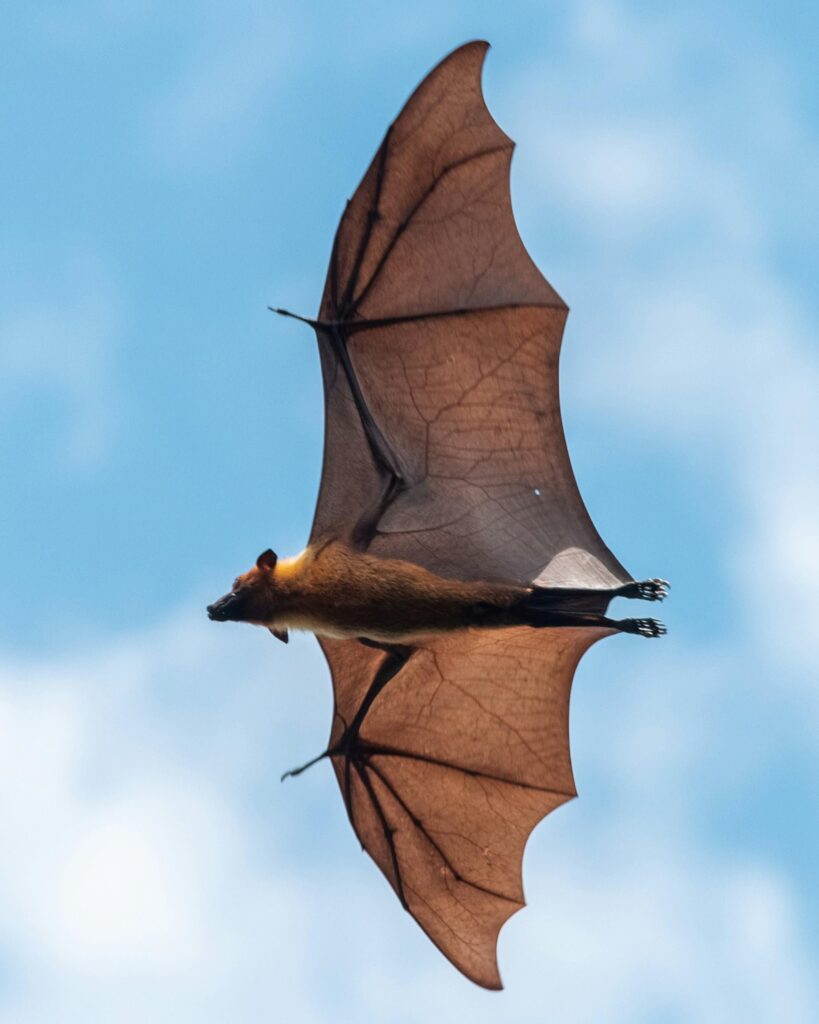The journal Science recently published a large study that reported on the relationship between biodiversity and infant mortality. The study looked at how the white-nose syndrome (a fungal disease that has eradicated large populations of bats in various regions in North America and other places). When these bat populations were reduced due to this disease they could not, for obvious reasons, keep insects in these regions in check. Thus, the insects multiplied and consumed much more of the foods grown by farmers in these areas. To protect their crops, farmers increased their use of pesticides (on average by 31.1). This affected both the quality and the toxicity of the foods, while also making the cultivation of foods more expensive for farmers. Harrowingly, but not surprisingly, infant mortality in these areas increased by almost 8% when compared to control groups. This, the report concludes, was due to the increased toxicity of the foods consumed.
This is one of many illustrations of the importance of biodiversity for both human and non-human worlds. Biodiversity loss means that species become endangered and go extinct. Indeed, we live in what is sometimes described as the sixth mass extinction of species on the planet (the fifth was the extinction of the dinosaurs and many other species some 65 million years ago). At the same time, biodiversity erosion leads to extensive human suffering and death, as well as economic hardships for those who produce food.
The problem is, of course, that the dominant world-food system is exceedingly poor at furthering biodiversity. Since the establishment of monocrop plantations in America in the seventeenth century, agriculture has become increasingly extractive and exhaustive. As a consequence, land has become a lot less biodiverse and, in some cases, so depleted that the extensive use of chemical fertilisers and pesticides is the only way to grow things. This has created an inexorable downward spiral where soil depletion and biodiversity loss force farmers to reduce costs and effectivize agriculture. This, only accelerates the erosion of biodiversity and human death and suffering. And so on.
This is where the fact that indigenous peoples are far better than non-indigenous societies in preventing biodiversity loss becomes important. In the comprehensive study ”Indigenous Peoples and Biodiversity” from 2001, Victor M. Toledo observes that while there are only 300 million Indigenous people in the world (other studies suggest 476 million, which means that some 4-6 per cent of all people are Indigenous), they manage 80-90 per cent of the world’s biodiversity. These biodiverse lands are constantly being encroached upon by the dominant agricultural system, but also by mining and coal/oil companies, and by energy prospectors. In the years to come, the exhaustion of soil across the world, along with the attempt to prolong the fossil fuel economy, while at the same time mining for minerals necessary for the “green transition”, will speed up such encroachments.
The long-term, scientific strategy would be to collaborate with indigenous people in an effort to figure out how the production of food and other essentials can become more biodiverse and less erosive. The Indigenous scholar Kyle P. Whyte has warned against thinking of Indigenous people as “Holocene Survivors”; people who have somehow survived 400 years of colonialism unscathed and are now ready to help guide non-indigenous people into the future. Also, Indigenous people may, or may not, be interested in collaborating with societies that have, for a long time, suppressed their right to land, language, culture, religion and even life. Even so, a crucial starting point for long-term food security is the need to restore land, rather than effectivize and accelerate the use of land, across the planet.
Photo by Ishan @seefromthesky on Unsplash

